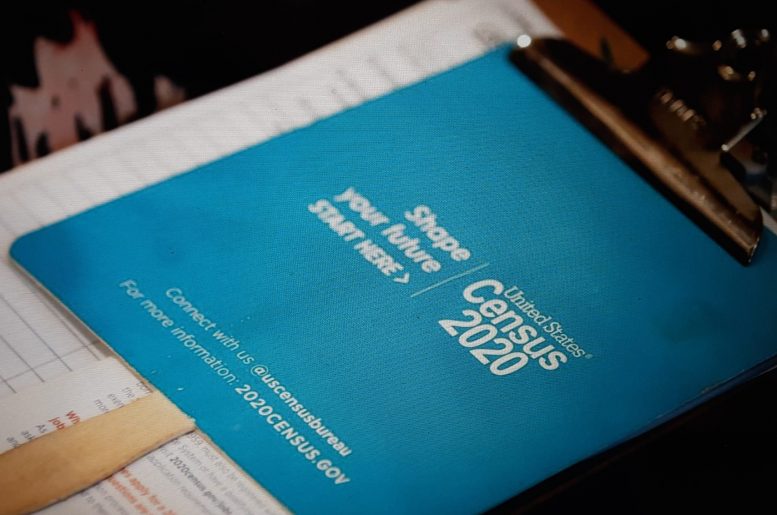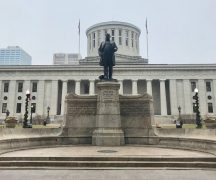Ohio Capital Journal
WASHINGTON — It’s National Census Day.
Organizations across the country are marking the occasion with webinars, virtual rallies, Twitter chats and other digital events throughout the week. April 1 is the date by which all people in U.S. households are to be counted.
But the COVID-19 pandemic threatens to make the count even more difficult than usual, which could exacerbate the inequitable distribution of resources in Ohio and other states.
Mandated by the U.S. Constitution, census data are used to distribute billions of dollars in federal funds to states, counties and communities for schools, roads, hospitals and other programs and services. In 2016, Ohio received more than $33 billion from federal spending programs that relied on 2010 census data to disburse funds.
The data are also used to apportion states’ representation in Congress and in the Electoral College and to draw congressional and state legislative district boundaries.
But a full and fair accounting of millions of Ohioans — not to mention hundreds of millions of Americans — is virtually impossible, even in typical census years. Certain groups — such as people of color, young children and others — have historically been undercounted, leaving them with less access to their share of government-funded programs and services. White people, on the other hand, have been overcounted in the past, according to the U.S. Census Bureau.
The COVID-19 outbreak “definitely has the potential to really reduce the response rate, precisely in the communities that have the lowest response rates in the first place,” said Justin Levitt, a political science professor at California State University in Long Beach.
People reached by door-to-door visits are less likely to have internet access or check their mail and respond to it, he said, and the success rate of such in-person visits is unclear at this point.
There’s no way to predict how the pandemic is going to affect the count in these communities, according to Richard Gunther, a professor emeritus of political science at Ohio State University. But he agreed that historically undercounted groups are most likely to require in-person follow-up visits, which could be more difficult than usual due to the pandemic.
“We just don’t know what the situation is going to be at the time individuals go out to do interviews,” he said, noting that census-takers may have concerns about being exposed to the virus inside people’s homes — or vice versa.
Terri Ann Lowenthal, a consultant with expertise in the census, noted that many census operations, especially those involving in-person contact, have been delayed or suspended. “We don’t know yet if the Census Bureau will be able to hire enough workers to get the job done well or if people will be willing to open their doors essentially to a stranger,” she said.
Undocumented immigrants are particularly vulnerable to an undercount, particularly those who don’t speak English, Levitt said. People experiencing homelessness are another at-risk group, and the scheduled April 1 count of people living under bridges, in parks, in shelters and other spaces — an effort that involves in-person contact — has been put off until May 1.
‘Real money’ at stake
The disruptions make phone and internet responses more important than ever, said Saumya Narechania, director of advocacy at the National Democratic Redistricting Committee. “This is the first census that can be filled out online,” he said. “Having that option as folks are cooped up is … first and foremost a good thing.”
But questions remain about how the nation’s first “online first” census will play out, especially in hard-to-reach communities with little or no high-speed internet access and among historically undercounted groups. “The same concerns as before still apply,” Narechania said.
He and other advocates are working to mitigate undercounts by explaining the implications of the census. They plan to stress that “real money” is at stake, highlight the various response options and help communities get the resources they need to drive up response rates.
The Census Bureau’s key message, meanwhile, is to reassure people that they won’t have to violate social distancing guidelines to complete the census form. “It has never been easier to respond on your own, whether online, over the phone or by mail — all without having to meet a census taker,” a recent statement says.
Many Americans, it appears, are doing just that.
As of Tuesday, more than 36% of Americans had completed the census questionnaire. The response rate is a bit higher — about 39% — in Ohio, and most of those responses have been online.
Nationwide, the self-response rate is rising more slowly than it did over a comparable time period in 2010, according to the Center for Urban Research at the City University of New York.
As of April 1, most U.S. households have received invitations sent by mail to participate in the census online or by phone, according to the bureau. Invitations include paper questionnaires in areas that are less likely to respond online.
Reminder postcards are being delivered this week to households that have not responded, and reminder letters and paper questionnaires will be sent to remaining households later in April. In response to the pandemic, the bureau has suspended all field operations until April 15, delayed door-to-door visits, and extended the response deadline by two weeks to mid-August. An official count is due to the White House and Congress in December.
“The one thing I would underline is uncertainty,” said Gunther of Ohio State University. “We’ve never been here before, and we don’t know how this would impact behavior. It’s difficult to even hazard a guess.”
Allison StevensAllison Stevens is a Washington D.C. reporter for States Newsroom, a network of state-based nonprofit news outlets that includes the Ohio Capital Journal.
***
More Coronavirus reporting for Ohio Capital Journal
Some groups are educating Ohio voters about the primary voting system. Others are fighting it
Time is of the essence.
Civic groups in Ohio are split between promoting the 2020 primary election system put in place by the General Assembly and fighting for a better one.
With the mail-only absentee ballot deadline now officially set, some advocate groups are getting to work educating voters about the multi-step process. It’s not terribly complicated, but it does require Ohioans get a move on to make the April 28 deadline.
This is exactly the problem, other groups contend: voters are forced to learn and properly navigate an absentee ballot system, all while precious time is running out. Read more
***
Two weeks, 2,000 new cases: COVID-19 accelerates in Ohio
State data shows the new coronavirus is picking up speed, having infected at least 2,000 Ohioans in the last two weeks alone, which officials and experts widely believe to be an undercount.
As of Tuesday, 2,199 Ohioans are known to be infected with COVID-19 — 266 diagnosed within the last 24 hours. At least 585 people have been hospitalized due to the disease, 198 of whom required ICU care. Fifty-five people have died after infection.
Just two weeks prior, there were 67 confirmed cases, 17 hospitalizations, and the first three known deaths connected to COVID-19 in Ohio. Read more






